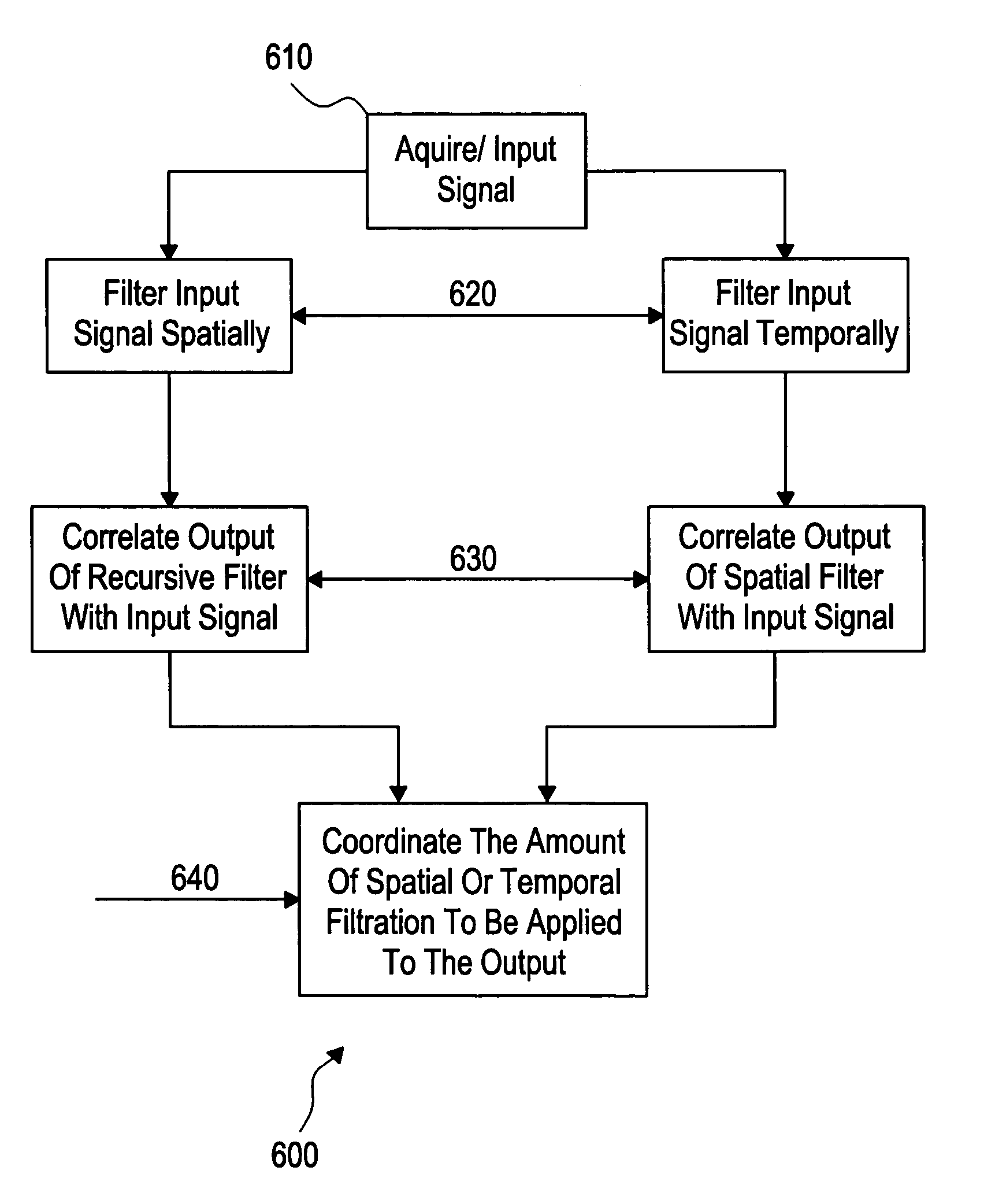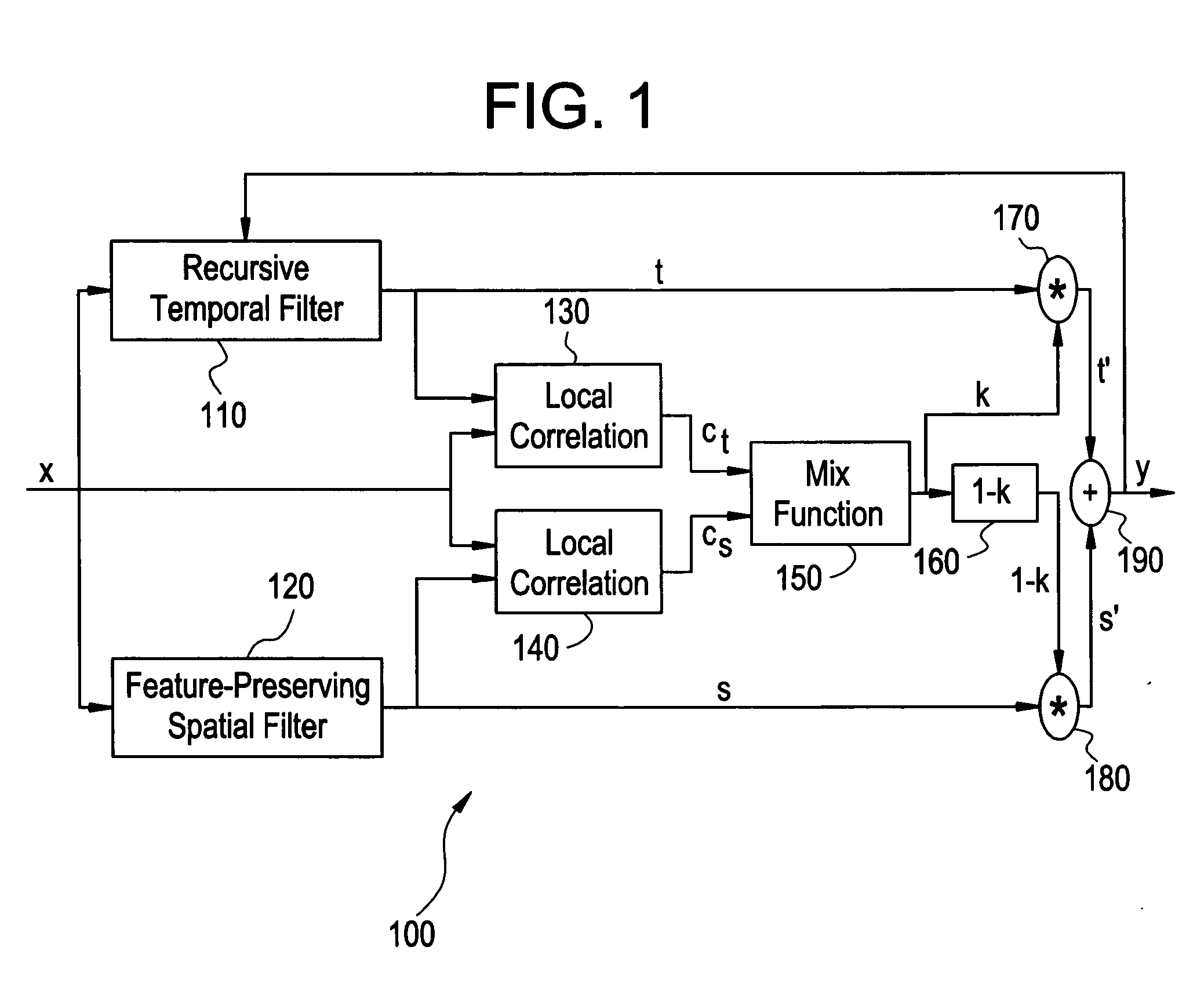System and method for image noise reduction using a minimal error spatiotemporal recursive filter
- Summary
- Abstract
- Description
- Claims
- Application Information
AI Technical Summary
Benefits of technology
Problems solved by technology
Method used
Image
Examples
Embodiment Construction
[0024]FIG. 1 illustrates a data flow diagram 100 of a minimal-difference spatiotemporal (MDST) filter used according to an embodiment of the present invention. The data flow diagram 100 represents various units and flow of data in computing an output signal y from an input signal x. The input signal x is input into four units. The input signal x is input into a recursive temporal filter 110, a feature preserving spatial filter 120, a local correlation unit 130, and a local correlation unit 140. The feature preserving spatial filter 120 and the recursive temporal filter 110 produce outputs s and t respectively. The outputs t and s are input into the multiplication units 170 and 180 respectively. The outputs t and s are also input into the local correlation units 130, 140 respectively, together with input signal x. Local correlation units 130, 140 produce outputs ct and cs, respectively. Outputs ct and cs are input into a mix function unit 150. The mix function unit 150 produces an ou...
PUM
 Login to View More
Login to View More Abstract
Description
Claims
Application Information
 Login to View More
Login to View More - R&D
- Intellectual Property
- Life Sciences
- Materials
- Tech Scout
- Unparalleled Data Quality
- Higher Quality Content
- 60% Fewer Hallucinations
Browse by: Latest US Patents, China's latest patents, Technical Efficacy Thesaurus, Application Domain, Technology Topic, Popular Technical Reports.
© 2025 PatSnap. All rights reserved.Legal|Privacy policy|Modern Slavery Act Transparency Statement|Sitemap|About US| Contact US: help@patsnap.com



